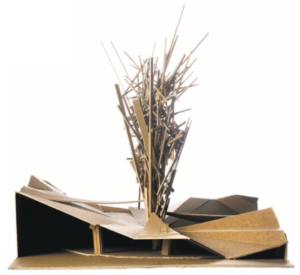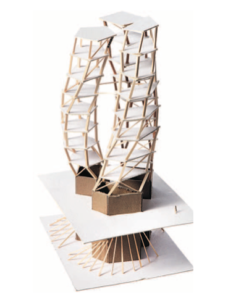The New York Times
Writers as Architects
by Matteo Pericoli
August 3, 2013
Great architects build structures that can make us feel enclosed, liberated or suspended. They lead us through space, make us slow down, speed up or stop to contemplate. Great writers, in devising their literary structures, do exactly the same.
So what happens when we ask writers to try their hand at architecture? At the “Laboratory of Literary Architecture,” a course I have taught at the Scuola Holden, a creative writing school in Turin, Italy, and also, this past semester, at the M.F.A. writing program at Columbia University School of the Arts (SOA) in New York, I encourage students to find — or, rather, extract — and then physically build the literary architecture of a text.
Each student brings to class a novel, a short story or an essay whose inner workings he or she knows intimately. We start with the plot, the subject or simply a feeling that the student has about the text. We break the piece of writing down into its most basic elements and analyze the relationship of each part to the overall structure, making sure to avoid any literal translations of the text — for example, a specific building or setting.
The exercise is a process of reduction. In architecture, once you remove the skin — the “language” of walls, ceilings and slabs — all that remains is sheer space. In writing, once you discard language itself, the actual words, what’s left? Thus we also work toward the questions that architects, knowingly or unknowingly, must always address: how does one design and build using emptiness as a construction material? How do we perceive space? And how does it affect us?
Once the creative writing students have an idea for their structures, they team up with architecture students to construct 3-D models. This moment always has an element of magic: two students from very different disciplines coming together, now sharing a common language, knowing exactly where to meet, and why. They discuss spatial relationships, repetition, reflection, sequence, transparency, tension, pacing, chronology and so forth. Any architectural question is answered from a literary point of view; any literary issue is addressed by a spatial idea. There is no room for arbitrary moves.
For someone who has practiced as an architect, but has spent much of his life drawing, reading and occasionally writing, I find great pleasure in watching the students progress from nervously approaching the early moments of the course, when cardboard, scissors and glue sit neatly untouched, to not only being able to make the tangible out of the intangible but to mastering highly sophisticated design decisions. For writing students, being able to think wordlessly about literature, at least once, can be revealing, liberating and even empowering.
Published, August 3, 2013, The New York Times
http://opinionator.blogs.nytimes.com/2013/08/03/writers-as-architects



